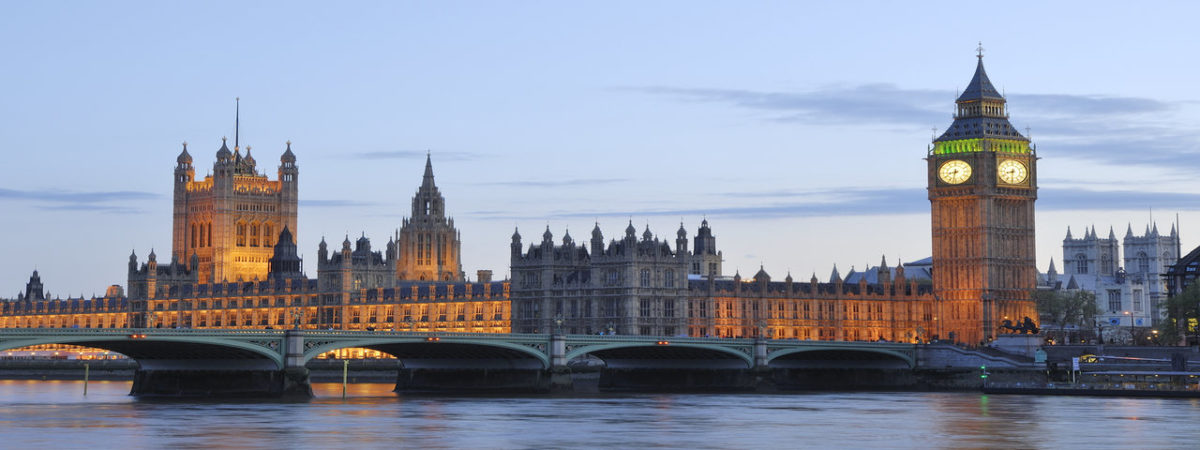What’s the right way to think about cost?
SUGGESTED



‘Imagine that you have a free ticket (which you cannot resell) to see Radiohead performing. But, by staggering coincidence, you could also go to see Lady Gaga – there are tickets on sale for £40. You’d be willing to pay £50 to see Lady Gaga on any given night, and her concert is the best alternative to seeing Radiohead. Assume there are no other costs of seeing either gig. What is the opportunity cost of seeing Radiohead? (a) £0, (b), £10, (c) £40, or (d) £50.
He provides an answer to the question at the end of his article. The example is based on an academic article by Paul Ferraro and Laura Taylor. Their version is the following:
‘You won a free ticket to see an Eric Clapton concert (which has no resale value). Bob Dylan is performing on the same night and is your next-best alternative activity. Tickets to see Dylan cost $40. On any given day, you would be willing to pay up to $50 to see Dylan. Assume there are no other costs of seeing either performer. Based on this information, what is the opportunity cost of seeing Eric Clapton? (a) $0, (b) $10, (c) $40, or (d) $50.’
 In a New York Times article, in 2005, Robert Frank provided the following answer: The opportunity cost of seeing Clapton is the total value of everything you must sacrifice to attend his concert – namely, the value to you of attending the Dylan concert. That value is $10 – the difference between the $50 that seeing his concert would be worth to you and the $40 you would have to pay for a ticket. So the unambiguously correct answer to the question is $10. Yet only 21.6 per cent of the professional economists surveyed chose that answer, a smaller percentage than if they had chosen randomly.
In a New York Times article, in 2005, Robert Frank provided the following answer: The opportunity cost of seeing Clapton is the total value of everything you must sacrifice to attend his concert – namely, the value to you of attending the Dylan concert. That value is $10 – the difference between the $50 that seeing his concert would be worth to you and the $40 you would have to pay for a ticket. So the unambiguously correct answer to the question is $10. Yet only 21.6 per cent of the professional economists surveyed chose that answer, a smaller percentage than if they had chosen randomly.Writing at the time, Alex Tabarrok called this a ‘professional embarrassment’, and reassured readers that ‘if you really want to learn economics come to GMU [George Mason University]. I guarantee that your professors understand opportunity cost’.
The reason I noticed this is because I learnt economics at GMU, and have recently published a textbook on Managerial Economics called Markets for Managers. The second chapter is called ‘Cost and Choice’ and I use the following example:
Imagine that you are given a choice between three banknotes:
- £50
- £20
- £10
What is the cost of choosing the £20 note?
The answer I provide is £50. This is in conflict with Harford, Frank, and Tabarrok. Am I wrong? Do I not understand cost?
The first point to make is that we’re debating the concept of ‘opportunity cost’, and the idea that the cost of an action is what you forgo. Therefore the amount that you pay, or the receipt that you might provide your accountant, are not what economists consider to be costs. But I find it odd that in the above examples cost is defined as the ‘net benefit’. And I’m not the only one.
The example that I used in my textbook is based on the following question from a management training programme that I attended:
You have a choice between three different projects, and these are the associated profits. What is the opportunity cost of choosing project 2?
- $200
- $150
- $100
This prompted an intense discussion amongst participants. Many said that cost is the difference between the value of option 2 ($150), and the value of your next best alternative (i.e. $200). So I think that a plausible answer is $50. And this utilises the same reasoning that would say the cost of seeing Radiohead/Clapton is the difference between the value of that option, and the value of your next best alternative – which is $10.
However, in my classes I define cost as the Next Best Alternative (NBA). I don’t define it as the difference between the value of the action that you choose and the value of the NBA. The latter is an important concept, but it seems to me that we’re jumping to an answer too quickly (or possibly asking the wrong question). At the programme, I was impressed by the contribution of Emily Chamlee-Wright:
‘[Y]our opportunity cost is the value you forgo. It is important to understand the net cost of a particular decision but opportunity cost is an input into that computation, not the solution.’
Indeed in response to the Ferraro & Taylor question, Tyler Cowen said the following:
‘But just as “cost” was a gross term, so does “opportunity cost” stay a gross term, it does not become a net one. Only the word “opportunity” has been added to “cost,” so why leap from gross to net thinking?…
G.L.S. Shackle wrote about a “skein of imagined alternatives.” This captures the “gross” idea properly, and remains subjectivist, but it doesn’t encourage the leap into the mix of net thinking and consumer surplus, which remains a separate concept.’
So for readers of my textbook that would say the answer is £30, I don’t think that’s wrong. But I believe that an answer of £50 is more consistent with how I’ve defined costs in the book, and how we tend to treat them in the real world. The fact that professional economists debate this – and use the same examples almost a decade letter – shows just how rich and important the basic concepts are.
Anthony J. Evans is the author of Market for Managers: A Managerial Economics Primer.
5 thoughts on “What’s the right way to think about cost?”
Comments are closed.





Here is the definition of ‘opportunity cost’ that I used in my 1987 text book ‘Essential Management Accounting’: “The hypothetical revenue or other benefit that might have been obtained by the ‘next best’ alternative course of action, which was foregone in favour of the course actually taken.” Perhaps the best practical example is the discount rate to be used in discounted cash flow calculations for capital projects. It should represent the expected rate of return that could be earned on an equivalent-risk project. It is very important to remember that we are talking here about hypothetical amounts that may well be subject to a large margin of error. NB: I am an accountant not an economist.
It is an interesting characteristic of Economics that the most fundamental concepts can give rise to a fair amount of debate and confusion. The distinction between an opportunity cost notion based upon ‘net’ or surplus concepts and a notion that sticks to ‘gross’ measures of the alternatives sacrificed is a useful clarification. Anthony Evans does not actually say what his answer to the original question would be – but presumably (and in spite of Friedman’s famous dictum) there is such a thing as a ‘free’ Radiohead’ concert, at least there is if the tickets are untradable. The ‘gross’ private opportunity cost is actually zero. Of course, with trade forbidden, there is a hidden social opportunity cost – what another person, implicitly displaced by the ticket winner, might have been prepared to pay. Suppose, instead, that a market is permitted and that Radiohead tickets can be traded there for $60. I suspect that if the question were reformulated in this way many economists (including those from GMU) would have no trouble in saying that the private and social opportunity cost of attending the Radiohead concert using the ‘free’ ticket was $60 – thereby implicitly favouring Anthony Evans’ or Tyler Cowen’s ‘gross’ conception of opportunity cost.
The Tim Harford/Ferraro and Taylor “answers” are not simply confusing “gross” and “net”
concepts (of opportunity cost); it is rather that they are confusing entirely the elements of an event
with the opportunity cost (total value of forsaken alternatives) involved in realizing an
event.
As the late, great, Armen Alchian explained,* in his locus classicus on the topic of ‘Cost’,
some 37 years ago, a fundamental distinction must be made… ‘between (a) undesirable attributes
inherent in some event’ [in the example of Harford, the £40 new/extra ticket money that would have to be
shucked out to attend the Gaga concert]; ‘and (b) the highest-valued forsaken option necessary
to realize that event…’ [which Harford reports as a willing-to-pay valuation of £50].
Clearly the opportunity cost of seeing Radiohead on this night, and not Lady Gaga,
is –according to Alchian’s classic treatment of this notion –£50, and not £10!
(I note in parenthesis that if Tim Harford believes that it it is possible to get Lady Gaga Concert
tickets for £40 then he is also badly mistaken about the market realities in this arena!).
*A.Alchian, ‘Cost’, International Encyclopaedia of the Social Sciences, Macmillan, New York, and
the Free Press, 1968, pp.404-14.
Opportunity cost should be defined, net or gross, consistently with the needs of making correct choices. That in turn requires a full specification of the consequences, financial and/or psychic, of each alternative.
The concert example is not specified fully. The opportunity cost of Radiohead/Clapton is the forgone alternative of the utility value of Gaga/Dylan (50) minus its financial cost (40) which indeed makes it 10. But neither that nor any of the other possible measures help you to choose correctly between the two events, as the utility of attending Radiohead/Clapton is missing. The choice here is between the net value of Gaga/Dylan (10) and the equivalent net value of Radiohead/Clapton. If e.g. attending that brought a ‘willing-to- pay’ value of only 5, and at zero financial cost also a net value of 5, paying to attend Gaga/Dylan with a net value of 10 would be the better option.
Now, as well as defining opportunity costs, we can also define, with Emily Chamlee-Wright, the net benefit (or cost) of a particular decision. In this case the decision to attend Radiohead/Clapton would have a net benefit of 5 minus opportunity cost of 10, i.e. a net cost of 5, reflecting the fact that it would be the wrong decision. Conversely the opportunity cost of Gaga/Dylan would be a forgone net value of 5, giving it a positive net benefit of 5, as the better option.
If on the other hand you could sell the Radiohead/Clapton admission for 60, but the utility value of attending to you were 70, you would then be undecided between two alternatives, each with a net value of 10 !
In the banknote example the alternatives are defined gross (or at least with an implied cost of 0 for acquiring the notes). So the opportunity cost of choosing the £ 20 note is indeed £ 50, which again means a net cost of £ 30 for choosing the £ 20 note, as choosing the £ 50 note is clearly the better option.
In the projects example the alternatives are in terms of profit, i.e. again in net terms, so the opportunity cost of choosing project 2 is 200, giving a net cost of 50 for the (wrong) choice of project 2.
The discount rate example is another case of comparing net returns, each having an opportunity cost represented by the net return of the best of the remaining alternatives.
I concur entirely with Dr Zafiris’s lucid and definitive exposition of the logic of the decision analysis that
may be applied to the (hypothetical) examples referred to in the foregoing discussion.
However, it is very pertinent to note also that this discussion has not been about choice analysis in general,
but (more narrowly) about the definition and application of the concept of opportunity cost (which is one
— but only one — element in choice analysis).
Moreover, in his original FT article on this latter matter, Tim Harford himself gives examples of
opportunity cost as follows: ‘Will I give a talk to some students, and therefore not read a bedtime
story to my son? Will I participate in a panel discussion instead of having a conversation over
dinner with my wife?’
In these examples — provided by himself — Tim Harford is clearly applying the concept of opportunity cost
in the “gross” sense (favoured also by me, the late Armen Alchian, and Professor Tyler Cowen
of GMU).
However, in a footnoted answer to his earlier “Radiohead & Lady Gaga” question, he then switches
suddenly to a “net” approach to the concept of opportunity costs: and which is clearly at variance
with his earlier exposition.
The (salutory) conclusion must be that it is vitally important, in utilizing (complex) economic
concepts such opportunity cost, to define one’s terms very clearly — and then to stick to these
consistently — if confusion is to be avoided.
[I must add, as a matter of fairness, that Tim Harford has generally been (in his books and columns) an absolutely outstanding — and consistent! — expositor of the economic way of thinking].